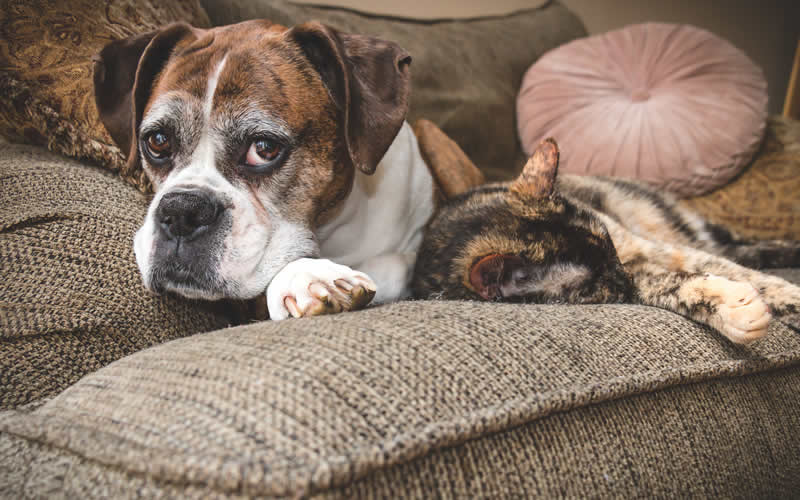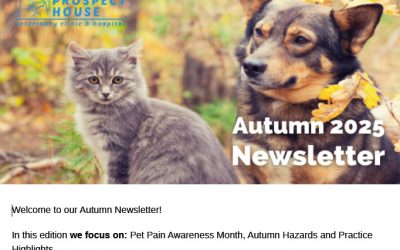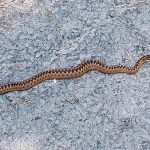Typically…. THE CAT that cannot jump on to the worktop anymore, who misses the litter tray when toileting, who cannot groom itself as well as it used to, who limps or hobbles occasionally, who licks constantly at its elbows, who stays indoors more often and is less active.
Osteoarthritis is a condition that typically affects older animals but can also affect the younger ones also. Large breed dogs are particularly at risk.
It can affect a range of joints, and incorporates the cartilage, joint capsule and nerve endings. There are factors that can have a bearing on the incidences of this condition, including obesity, breed, issues with immunity, any previous history of trauma and diabetes.
An estimated 1 in 3 dogs and 1 in 4 cats is either overweight or obese, and this could be reflected in the increasing numbers being affected by Osteoarthritis.
Also, as this is an age related disease, the fact that more animals are living longer could also be a factor in the statistics. The average age of a dog when treated for arthritis is 9 years, but symptoms could be displayed at an earlier age, but not recognised by owners.
Therefore, earlier intervention could delay the progression of the disease, so education and awareness is, therefore, even more important. As in humans, the condition is incurable, but there ARE things we can do to help alleviate the symptoms and improve our pets quality of life.
Early recognition and diagnosis is important, and a tailored treatment plan can be designed for each individual dog and cat.
Initially, an appointment will be made with one of our Veterinary surgeons who will examine your pet, discuss findings and advise a suitable course of treatment. These may include anti-inflammatory pain killer, supplements such as Glucosamine and Chondroitin, Physiotherapy and possibly the use of Hydrotherapy.
If preferred, an initial appointment can be made with the nurse responsible for the Physiotherapy and any concerns or questions you have can be directed to her. She can then refer you for an appointment with a Vet should you both agree that this would be beneficial.
The use of Physiotherapy as part of a multimodal approach to the treatment of osteoarthritis is well recognised in both human and animal medicine. It uses massage and stretching exercises to increase the range of movement in a joint/joints, and can be used to strengthen core muscles, which in turn, helps limbs.
It can also help increase muscle mass where the disease has caused them to weaken. The initial Physiotherapy session will be an appointment with a nurse who has had relevant training and will take a detailed history about your dog/cat, to include any current medications, exercise patterns and food.
A weight and Body Score will be recorded, details of the home environment will be taken (for example, use of stairs, flooring materials etc).
Time will be spent getting to know both your pet and yourself prior to working together to create a suitable plan which will be used at the surgery and at home.
An assessment of your pet will be carried out, a full explanation of any relevant observations will be given, a full demonstration of exercises will be given to you, and as long as you feel comfortable and able to, these can be carried out at home between review appointments.
We can advise of any adaptations in the home which would benefit your pet as 90% of your pets time is spent here. Small lifestyle changes can be made which will benefit the management of the condition. These may include changes to the type and duration of walks, looking at types of bedding, use of steps etc. We can monitor weight as this is a very important factor in the management of osteoarthritis.
At all stages of your pets ongoing treatment plan, we will discuss things with you and when necessary, make suitable adjustments to enable the plan to meet some of its aims… To maintain or improve quality of life and to manage pain.
We would encourage anybody who feels that their dog or cat may benefit from anything detailed in this document, to please ask to speak to a member of staff.
Christmas Opening Hours
Please see our Christmas Opening times for Colwyn Bay and Llanfairfechan
Winter Newsletter
Read all our latest winter news at Prospect House Vets
Autumn Newsletter
Read our latest Autumn news for Prospect House Vets









